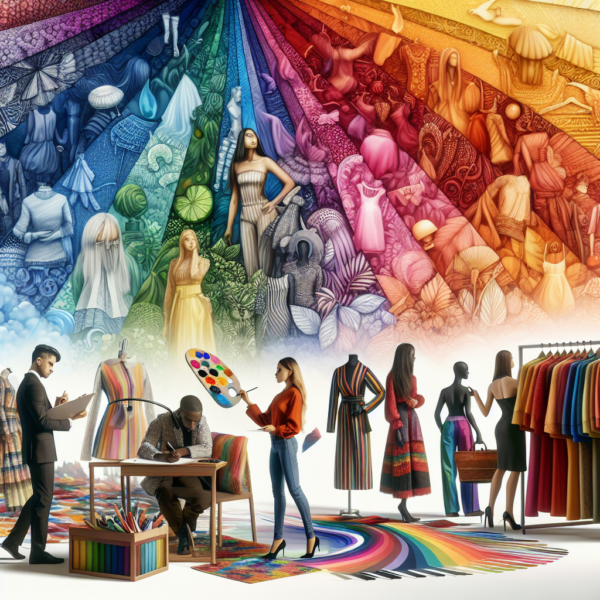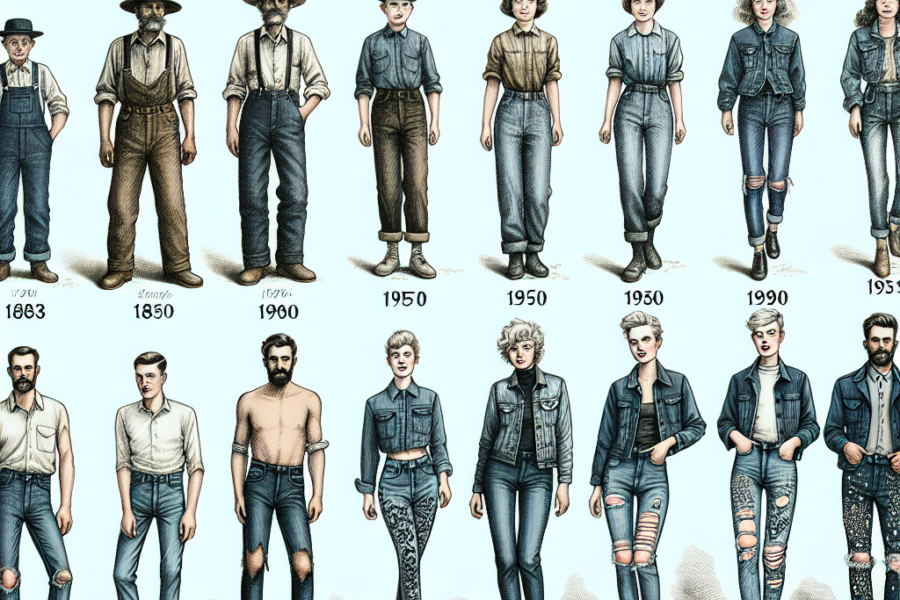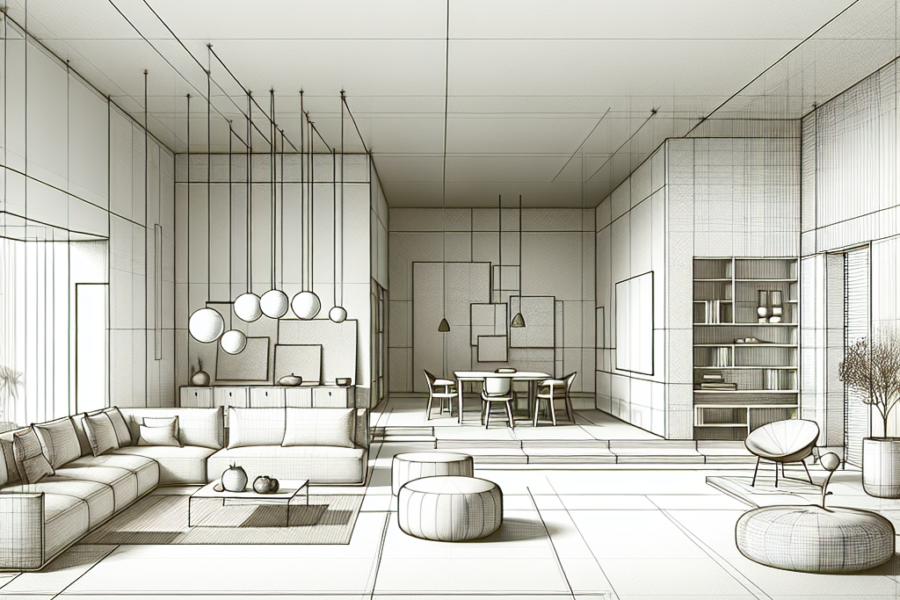Fashion Forward: How Technology Is Revolutionizing the Design Process
Introduction
In the ever-evolving world of fashion, technology has become an essential tool for designers to create innovative, cutting-edge designs. From 3D printing to virtual reality, advancements in technology have revolutionized the design process, making it faster, more efficient, and more creative than ever before. In this article, we will explore how technology is reshaping the fashion industry and the ways in which designers are embracing these new tools to push the boundaries of design.
The Rise of 3D Printing in Fashion
One of the most significant advancements in technology that has revolutionized the fashion industry is 3D printing. The ability to create three-dimensional objects from digital files has opened up a whole new world of possibilities for designers, allowing them to experiment with shapes, textures, and materials in ways that were previously impossible. In the world of fashion, 3D printing has been used to create everything from intricate jewelry pieces to stunning runway dresses.
Designers like Iris van Herpen have embraced 3D printing as a way to push the boundaries of traditional fashion design. Her collections feature intricate, sculptural pieces that are created using a combination of hand-crafted techniques and cutting-edge technology. By using 3D printing, van Herpen is able to create designs that would be impossible to produce using traditional methods, resulting in truly unique and innovative pieces.
In addition to its creative possibilities, 3D printing also offers practical benefits for designers. The ability to create prototypes and samples quickly and cost-effectively allows designers to iterate on their designs more efficiently, saving time and money in the process. This rapid prototyping process also enables designers to be more responsive to changing trends and customer demands, giving them a competitive edge in the fast-paced world of fashion.
Virtual Reality and Augmented Reality in Fashion
Another technology that is revolutionizing the fashion industry is virtual reality (VR) and augmented reality (AR). These immersive technologies allow designers to create virtual environments in which they can visualize and manipulate their designs in real-time, giving them a new level of control and creativity in the design process.
Virtual reality enables designers to create digital prototypes of their designs and view them in a fully immersive 3D environment. This allows designers to see how their designs will look and feel in the real world, helping them to make informed decisions about materials, shapes, and proportions. With virtual reality, designers can experiment with different colors, textures, and embellishments, giving them a deeper understanding of their designs and how they will be perceived by consumers.
Augmented reality, on the other hand, allows designers to overlay digital information onto the physical world, creating interactive experiences that blend the virtual and the real. With augmented reality, designers can create virtual fitting rooms that allow customers to try on clothing and accessories without ever leaving their homes. This not only enhances the shopping experience for consumers but also provides valuable data for designers on how their designs are being received by the market.
The use of virtual reality and augmented reality in fashion extends beyond the design process and into the retail experience as well. Many fashion brands are using these technologies to create interactive storefronts and pop-up shops that engage and captivate customers. By creating immersive experiences that blur the lines between the digital and physical worlds, brands are able to create memorable and impactful experiences that drive consumer engagement and loyalty.
Artificial Intelligence and Machine Learning in Fashion
Artificial intelligence (AI) and machine learning are two technologies that are making a big impact on the fashion industry. These technologies are being used by designers to analyze data, predict trends, and personalize the shopping experience for customers. By harnessing the power of AI, designers are able to make more informed decisions about their designs and create more targeted and relevant products for their customers.
One way in which AI is being used in fashion is in trend forecasting. By analyzing vast amounts of data from social media, e-commerce platforms, and fashion shows, AI algorithms can predict emerging trends and consumer preferences with a high degree of accuracy. This allows designers to stay ahead of the curve and create designs that resonate with their target audience.
AI is also being used to personalize the shopping experience for customers. By analyzing data on customers’ browsing habits, purchase history, and social media interactions, AI algorithms can recommend products that are tailored to individual preferences. This level of personalization not only enhances the customer experience but also drives sales and loyalty for fashion brands.
Machine learning, a subset of AI, is being used by designers to create more efficient and sustainable design processes. By analyzing patterns in data and optimizing workflows, machine learning algorithms can help designers streamline their design process, reduce waste, and improve the overall sustainability of their products. This not only benefits the environment but also helps designers save time and resources in the design process.
The Future of Fashion Design
As technology continues to advance and evolve, the future of fashion design looks more exciting and innovative than ever before. From 3D printing to virtual reality to artificial intelligence, designers have a wealth of tools at their disposal to push the boundaries of creativity and create designs that are truly groundbreaking. By embracing these technologies and harnessing their power, designers can unlock new possibilities and revolutionize the way we think about fashion.
One of the key trends shaping the future of fashion design is sustainability. With growing concerns about the environmental impact of the fashion industry, designers are looking for ways to create more sustainable and eco-friendly designs. Technologies like 3D printing and machine learning are helping designers reduce waste, optimize resources, and create products that minimize their environmental footprint.
Another trend that is shaping the future of fashion design is customization. With advances in technology, designers are able to create personalized and tailored designs that cater to individual preferences and tastes. Virtual reality and augmented reality are enabling designers to create interactive experiences that allow customers to co-create their own designs, leading to a more personalized and engaging shopping experience.
In conclusion, technology is revolutionizing the fashion industry in ways that were once unimaginable. From 3D printing to virtual reality to artificial intelligence, designers have a wealth of tools at their disposal to create innovative and cutting-edge designs. By embracing these technologies and pushing the boundaries of creativity, designers are shaping the future of fashion design and paving the way for a more sustainable, personalized, and inclusive industry. Fashion is no longer just about what we wear, but how we create it, and technology is at the forefront of this transformation.








Leave a Comment